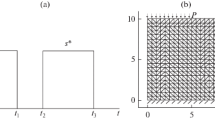Abstract
An experimental study for polymer sintering has been carried out using pairs of powder particles. Although in many cases Newtonian sintering models successfully describe polymer sintering, they predict a faster coalescence rate than that observed with the polypropylene copolymer resins used in this study, indicating that factors other than the surface tension and the viscosity play a role in polymer sintering. Observations of coalescence under the microscope and rotational molding experiments suggest that melt elasticity slows down the process. Based on these findings, a mathematical model describing the complete polymer sintering process for viscoelastic fluids has been developed. The approach was similar to that of Frenkel (1945) and the convected Maxwell constitutive equations were used together with the quasi-steady state approximation. The proposed viscoelastic sintering model is capable of predicting the sintering rate slowdown observed in this study.
Similar content being viewed by others
Author information
Authors and Affiliations
Additional information
Received: 18 August 1997 Accepted: 30 March 1998
Rights and permissions
About this article
Cite this article
Bellehumeur, C., Kontopoulou, M. & Vlachopoulos, J. The role of viscoelasticity in polymer sintering. Rheol. Acta 37, 270–278 (1998). https://doi.org/10.1007/s003970050114
Issue Date:
DOI: https://doi.org/10.1007/s003970050114




